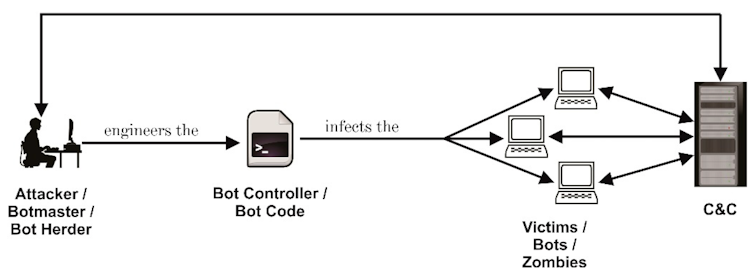Abstract
Introduction
Current WHO guidelines recommend using methadone or buprenorphine as maintenance treatments for maternal opioid use disorder. However, buprenorphine-naloxone, with a lower abuse risk than buprenorphine monotherapy or methadone, offers a potentially beneficial alternative, but scientific evidence on its effects on pregnancies, fetuses, and newborns is scarce. This paper compares the outcomes of the pregnancies, deliveries, and newborns of women on buprenorphine-naloxone, buprenorphine, or methadone maintenance treatments. According to the hypothesis, as a maintenance treatment, buprenorphine-naloxone does not have more adverse effects than buprenorphine, whereas methadone is more complicated.
Material and methods
In this population-based study, 172 pregnant women on medical-assisted treatments were followed-up at Helsinki University Women’s Hospital (Finland). Women receiving the same opioid maintenance treatment from conception to delivery and their newborns were included. Consequently, 67 mother–child dyads met the final inclusion criteria. They were divided into three groups based on their opioid pharmacotherapy. The outcomes were compared among the groups and, where applicable, with the Finnish population.
Results
The buprenorphine-naloxone and buprenorphine groups showed similar outcomes and did not significantly differ from each other in terms of maternal health during pregnancies, deliveries, or newborns. Illicit drug use during the pregnancy was common in all groups, but in the methadone group it was most common (p = 0.001). Most neonates (96%) were born full-term with good Apgar scores. They were of relatively small birth size, with those in the methadone group tending to be the smallest. Of the neonates 63% needed pharmacological treatment for neonatal opioid withdrawal syndrome. The need was lower in the buprenorphine-based groups than in the methadone group (p = 0.029).
Conclusions
Buprenorphine-naloxone seems to be as safe for pharmacotherapy for maternal opioid use disorder as buprenorphine monotherapy for both mother and newborn. Hence it could be a choice for oral opioid maintenance treatment during pregnancy, but larger studies are needed before changing the official recommendations. Women on methadone treatment carry multifactorial risks and require particularly cautious follow up. Furthermore, illicit drug use is common in all treatment groups and needs to be considered for all patients with opioid use disorder.
DISCUSSION
In the present paper, we demonstrate that OMT with buprenorphine-naloxone appears to be as safe during pregnancy as buprenorphine monotherapy for both mother and newborn. Women on methadone OMT carry marked risks and require particularly cautious follow up. Illicit drug use is common in all OMT groups despite seemingly committed patients.
Studies on relatively new OMT, such as buprenorphine-naloxone, are urgently needed.3, 13, 16–18 However, research on drug abuse issues is challenging because of recruitment problems, social stigma, dropouts, compliance issues, and confounding factors. In this study, we aimed at investigating OMT groups that were as pure as possible by including only mothers, who used the same OMT throughout the pregnancy, and their newborns. Aiming at the purity of the study groups leads to limited size of the study population. Although the basic population in the current population-based region is large (1.7 million), the number of women fulfilling the final inclusion criteria was small, and therefore the study may not have been powerful enough to discover all clinically significant factors. Hence, even though our population was larger than in many previous reports, specifically with buprenorphine-naloxone studies,13, 17 it was still small. Furthermore, the care of pregnant women with OUD is organized differently in different countries, which also may influence the results. Therefore, larger multicenter studies are needed before more precise conclusions are drawn.
The patient groups were relatively homogeneous and committed to OMT and follow up. The pregnancy monitoring, the deliveries, and neonatal care were performed in standardized circumstances. Several potential confounding factors were ruled out with the study design, which is a strength.
The concomitant illicit drug use is a potential confounding factor. Although we had assumed some illicit drug use, its magnitude during pregnancy was unexpectedly high.19, 20 Moreover, the actual use may have been even higher because the data are based on the patients’ own reports and voluntary urine tests, when the fear of child protection services involvement may have hindered truthful reporting. The role of the OMT dosage reduction in illicit drug use also remains uncertain. On the one hand, it did not seem to solely explain the high rate of illicit drug use, as 56% of the women with reduced doses did not use illicit drugs, but on the other hand, 44% did. In any case, the OMT dosing role needs to be clarified in future studies, not only because of the possible effects on illicit drug use, but also because constant dosing has been suggested to be more beneficial for both mother and fetus than decreasing doses.2
The most-used illicit drugs are in line with the previous literature,21, 22 except that cocaine was rarely used. Furthermore, mothers from buprenorphine-based groups may have additionally used illicit buprenorphine, which is difficult to detect in the tests (as the tests are anyway positive for buprenorphine as the OMT). Of note, the reason for preferring buprenorphine-naloxone as OMT and performing the present study, is this parenteral abuse potential of oral buprenorphine.
The illicit drug use was concerning in the research cohort. The methadone group was most complicated, not only with their most frequent illicit drug use, but also because of the overall situation. Their backgrounds were more severe, and they had more previous OMT periods as well as psychiatric comorbidities and medications. Furthermore, they suffered more from substance-use-related somatic diseases and experiences of violence. They also tended to start their visits to the maternity outpatient clinic later. Hence, their risk profiles were highly complex and may have, in a multifactorial way, affected the well-being, health and other outcomes of the women and their fetuses. Therefore, the interpretation of the methadone group requires caution because the outcomes may be caused by their overall complex situation rather than the methadone medication alone.
Smoking was common in all OMT groups, which is in accordance with previous publications.21, 22 Alcohol use, in turn, was far more moderate and of the same level as in the Norwegian study.19 We believe that this may be at least close to the truth. Although the alcohol consumption was based on women’s own reports, they had reported illicit drug use in higher numbers. Hence, one could assume that they would also report alcohol use, especially as in Finland, alcohol is legal whereas non-prescribed drugs and cannabis are not.
Maternal pregnancy complications and relatively common somatic diseases were as prevalent as in the general population. As expected, psychiatric comorbidities were more common,22, 23 as were certain generally rare somatic conditions that are likely to be associated with the history of injection drug use and associated lifestyle,24, 25 such as amputations, fasciotomy, endocarditis, thrombosis, pulmonary embolism and HCV. Considering heavy smoking, it was a slight surprise that placental abruption was not more common.26 The deliveries were also mostly uneventful. These patients, like all mothers in Finland, received free-of-charge high-quality maternal care, as indicated by the relatively low frequency of cesarean sections and low perinatal mortality (3.7/1000 neonates in Finland, 0 in the final study population14). The thorough follow up and planned labor modes may have resulted in these relatively safe pregnancies and deliveries.
The neonates were mainly born full-term, in good condition and without major defects. Hence, earlier single investigations suggesting higher risk for prematurity in OMT pregnancies,2 lower Apgar scores with buprenorphine-naloxone than with buprenorphine treatment,18 and increased risk for congenital defects27 were not supported by our research. In our original study population was one stillbirth, which was most likely explained by maternal injecting amphetamine use followed by septicemia rather than OMT, and the case was excluded from the final analysis. An assumption stating that it is unlikely to have a causal link between OMT substances and birth abnormalities2, 27 is supported by this paper. However, one must keep in mind the limited power of the reported studies, including ours.
Over half of the infants needed pharmacological treatment for NOWS. The need was lower in the buprenorphine-based groups than in the methadone group, which is in line with the clinical experience and the literature (maternal buprenorphine associated with less severe NOWS).8, 28, 29 Of note, even though the average daily dose of buprenorphine during the pregnancy was higher in the buprenorphine-naloxone group than in the buprenorphine-monotherapy group, the former infants did not suffer more from NOWS than the latter.
The neonates in all groups were born relatively small, although mostly within normal range. This is in line with previous literature7, 8, 13, 22 and could, at least partly, be explained by tobacco exposure.30 However, other risk factors, such as alcohol31 and polysubstance use, poor nutrition, as well as OMT medication8, 32 are also possible explanations. Additionally, because of limited human safety data,12 the role of naloxone needs further confirmation. Several studies, including ours, show similar outcomes with buprenorphine-naloxone and other forms of OMT,13 indicating that naloxone causes no additional harm. Nevertheless, solid scientific evidence is needed. Furthermore, the long-term clinical, developmental, and social effects of OMT on both mother and child require evaluation in future studies.
CONCLUSION
In this study, buprenorphine-naloxone maintenance treatment seems equal to buprenorphine monotherapy for mother and newborn. Future studies with larger data are needed to confirm the results. With lower parenteral abuse risk than with buprenorphine, buprenorphine-naloxone could be considered as useful medication for OMT during pregnancy. Women on methadone OMT have a more severe substance abuse problem with marked overall risk profile, so they require particularly cautious follow up. Furthermore, the ongoing illicit drug use is worryingly common even among committed patients. Hence, routine drug screening for women and neonates should be available, and NOWS needs to be diagnosed, if the mother is on OMT or any suspicion of fetal drug exposure exists.
Source: obgyn.onlinelibrary.wiley.com






